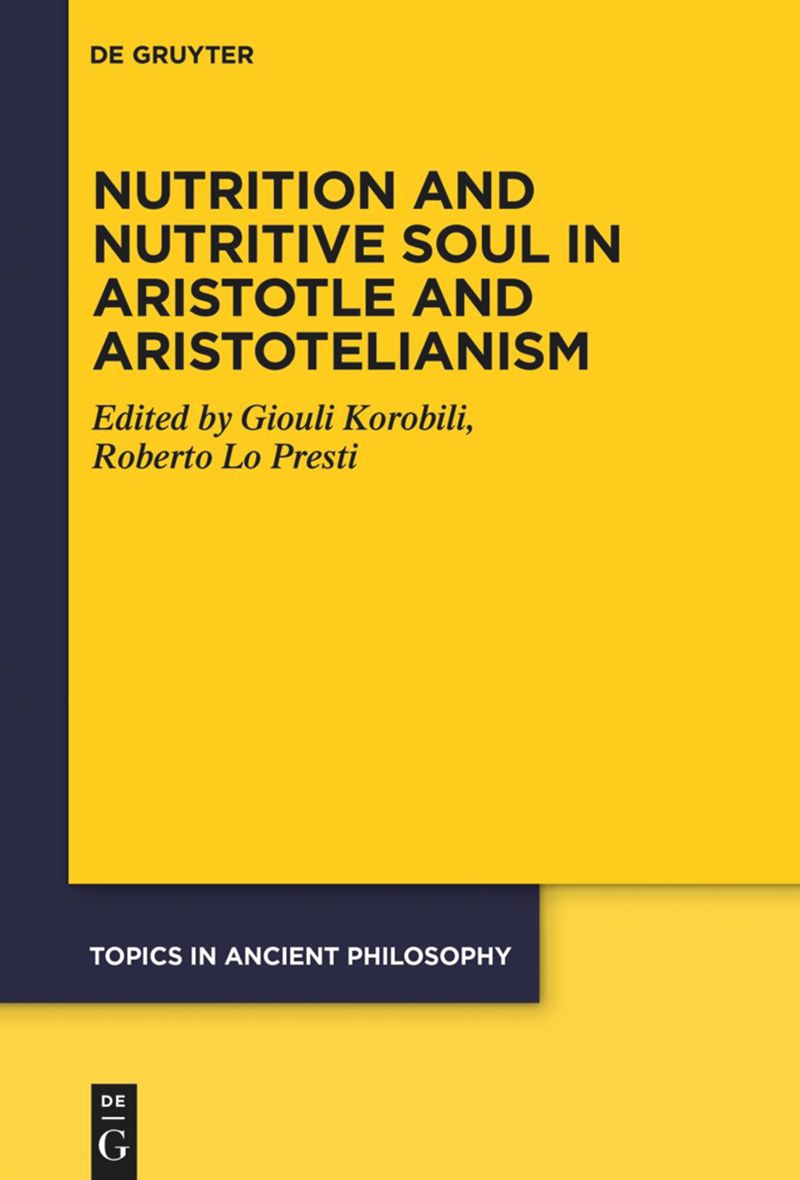
The editors of the volume have presented, in the introduction p. X-XI, Richard A. H. King's book Aristotle on Life and Death (Bristol, 2001) as a notable exception to the fact that Aristotelian studies have largely neglected the study of the nutritive soul and instead have focused on the sensitive and rational parts. In this chapter, Richard King aims to show that the study of nutrition is an original way of understanding the Aristotelian concept of the living form, a concept that makes it possible to understand that Aristotle made living beings his point of entry into the metaphysical investigation of being. The author begins with a precise analysis of the argument at the beginning of chapter II, 1 of On the Soul, which leads to the definition of the soul. He then turns to chapter I, 5 of the treatise On Generation and Corruption and the explanation of growth it contains, according to which matter flows and form grows. Building on this, Richard King goes on to examine the way in which form, insofar as it is present in the process of growth, plays a stabilising role within the living body. Finally, he turns to the Metaphysics to explain the nutritional background of the theory of substance.
A. M.
Les éditeurs du volume ont présenté, dans l’introduction p. X-XI, le livre de Richard A. H. King, Aristotle on Life and Death (Bristol, 2001) comme une exception notable au fait que les études aristotéliciennes ont beaucoup négligé l’étude de l’âme nutritive, en se concentrant davantage sur les parties sensitive et rationnelle. Richard King veut montrer dans ce chapitre que l’étude de la nutrition est une voie originale pour comprendre le concept aristotélicien de forme vivante, un concept qui permet de comprendre qu’Aristote a fait des êtres vivants son point d’entrée dans l’enquête métaphysique sur l’être. L’auteur commence par une analyse précise de l’argument du début du chapitre II, 1 du traité De l’âme qui mène à la définition de celle-ci. Il se penche ensuite sur le chapitre I, 5 du traité De la génération et de la corruption et sur l’explication de la croissance qui s’y trouve, selon laquelle la matière s’écoule et la forme croît. Il entreprend à partir de là de penser la manière dont la forme, en tant qu’elle est présente dans le processus de croissance, joue un rôle stabilisateur au sein du corps vivant. Il se tourne enfin vers la Métaphysique pour expliciter l’arrière-plan nutritif de la théorie de la substance.
A. M.